10 Best Poker Hand Rankings
Learn to Play Poker and Win With Our Downloadable Poker Hands Chart
Just started playing poker but have no idea what beats what? You wouldn’t be the first newbie to wing it at the poker table and hope for the best. But if you’re serious about learning poker—and even more importantly, winning poker—there’s no getting around it, you’re going to have to put in some legwork.
With so many strategies to learn, the trouble is knowing where to start first?! It might be tempting to kick off with a strategy session—after all, a solid poker strategy is what’s ultimately going to bag you the game—but before you start swotting, you need to nail the basics before you sweat the hard stuff. You know the saying, ‘don’t run before you know how to walk’ and all that jazz.
For a beginner poker player, the first step of your poker journey is to know exactly what cards you need to win. And that means, very simply, memorizing the crap out of your cards. And knowing which ones you can use to your advantage. Learning the best poker hands and having them stored in your memory bank is what will ultimately win you the game.
So, to help you get to the top of your poker game, and beat your opponents to a pulp, we’ve put together a list of the best poker hands ranked from highest to lowest — you can download your pocket poker hands chart here for ease but if you’re serious about learning poker, we recommend you keep reading. We’ve got a bucketload of tips on how to play these winning poker hands to your advantage. Here’s everything you need to know about poker hand rankings and how to play them.
10 Best Poker Hand Rankings

This might sound slightly obvious, but before you learn your poker hand rankings, you first need to know your poker suits, and the values attributed to each of the cards. This is a non-negotiable before you even think about playing poker.
There are four suits in a deck of cards—Hearts, Diamonds, Clubs and Spades, with 13 cards of each suit. Suits are generally abbreviated as:

Some games assign a hierarchy, but in poker, the suits don’t matter and are only relevant for making flushes, straight flushes and a royal flush. Don’t worry, we’ll come to that in a second.
Spades and clubs are black, hearts and diamonds are red. Each suit has the same 13 cards ranked from high to low:
A (Ace), K (King), Q (Queen), J (Jack), 10, 9, 8, 7, 6, 5, 4, 3, 2.
The suits all have equal value, except for the Ace, which is the only card that can be used as a high card (above King) and/or a low card (below 2, which is also called a deuce). Each individual’s card value is based on the ranking of the “hand” as a hole—which is 5 cards in standard poker.
Ok, so now you know the suits, you need to know how to use them.
Poker Hand Rankings: What You Need to Know
So what are poker hand rankings?
While each poker variant follows a different set of rules, most games have one main thing in common: to form the best five-card combination, or “hand”, possible. That’s ultimately the objective of the entire game.
While there are over 2.5 million different five-card hands, there are ten different categories of hands that you need to learn before you play. These hands are ranked in hierarchical order—if your set of five cards has the highest ranking cards, then you win the pot.
Poker hands are ranked mathematically based on the odds of being able to make them. The less likely it is to make the hand, the higher it ranks and beats the hands below it that are easier to make.
Each hand therefore has its own probability, meaning this is the probability that you can expect that hand to win or lose. These probabilities are handy to have in the back of your head in a poker game—they’re the reason why hands are ranked the way they are. For example, a straight flush is less likely than a pair, which is why a straight flush wins. But we can talk more about odds and probability later on. Let’s not get too ahead of ourselves.
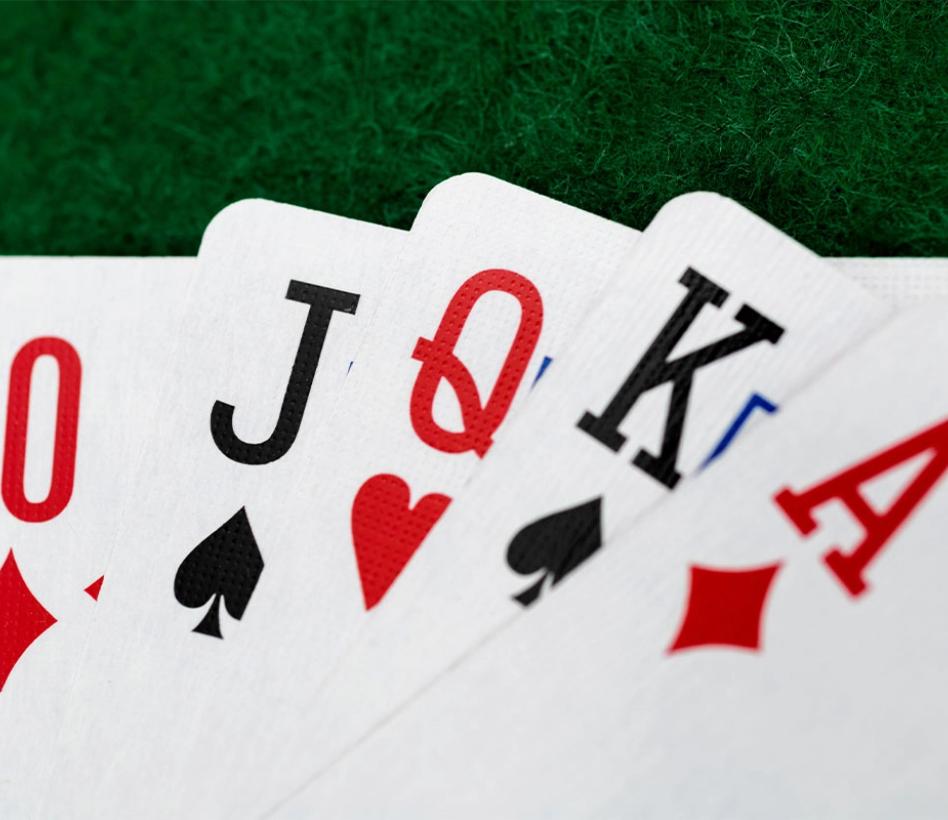
What Are the Best Poker Hands?
Most standard poker games consist of five-card hands. This hand is either made up using your cards alone (if you have a good enough hand to start with) or using a mix of your cards and community cards (cards that are dealt face up in the center of the table and shared by all the players). Even if you have more than five cards to choose from, the end goal is to choose the best five cards available to beat your opponents.
There are several variations on the card and hand ranking systems in poker, but the most common is the one used by Texas Hold’em, Stud poker and Pot-Limit Omaha (PLO). These are classed as ‘high’ games as the higher-ranking cards beat lower ranking ones. In ‘low-games’ such as razz, it’s the opposite: the hand that ranks the lowest will be the winner. That means a two pair will beat a three of a kind.
The final variation is the ‘high-low’ split game, which uses both the high and low hand rankings to split the pot between the players with the best high hand and the best low hand. But to save confusion for now, we will just focus on the high games so you can get to grips with the basics. Just make sure that you’re playing a high game if you’re using this as a reference tool!
To help you make sense of the hand rankings, we’ve put together a handy (see what we did there?) poker hands chart that you can print out and mount on your wall, or, probably the easier of the two, save to your phone so you can whip it out whenever you need.
A quick tip: remember that any hand in a higher category beats any hand in a lower category, e.g. three of a kind beats any two pairs. We’ve also added the probability of you actually getting that hand, but we can go into more detail about this below.
You’ll also find a handful of tips (these puns just keep on coming) covering how to calculate poker odds, as well as the best starting hands, a downloadable poker hands cheat sheet that you can keep close to your chest, and some rules around poker hand rankings that you should be aware of, to give you a head start in your next poker game.
Download the hand rankings guide below, then just keep on scrolling…
Poker Hand Rankings: Your Handy Guide
Here are the poker hand rankings, ranked from highest to lowest.
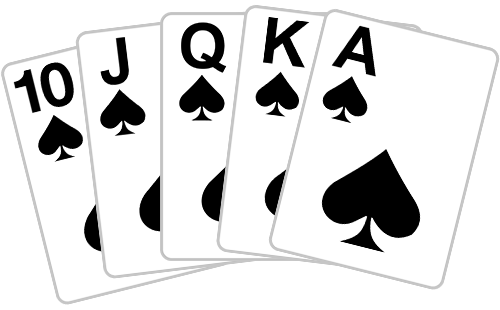
Royal Flush

Straight Flush
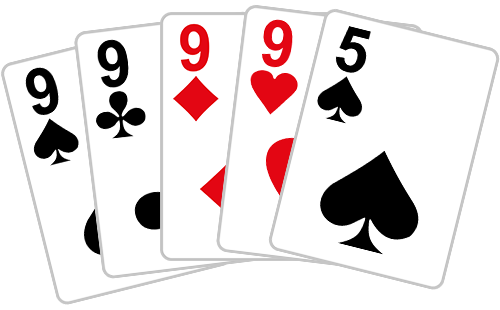
Four of a Kind
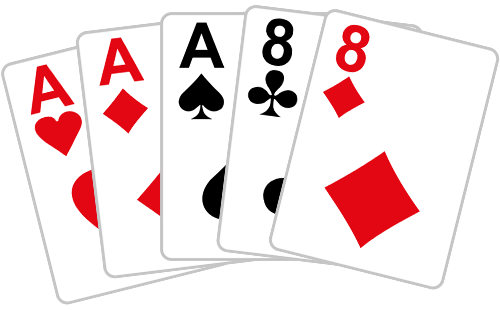
Full House

Flush
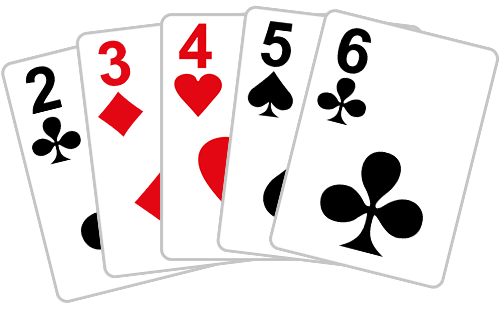
Straight
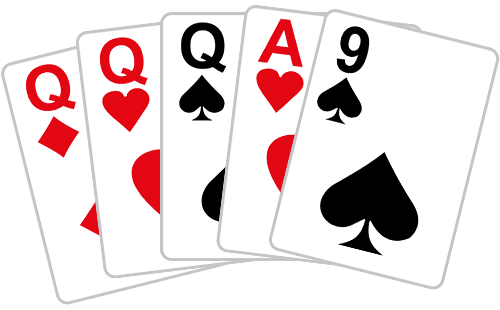
Three of a Kind

Two Pair
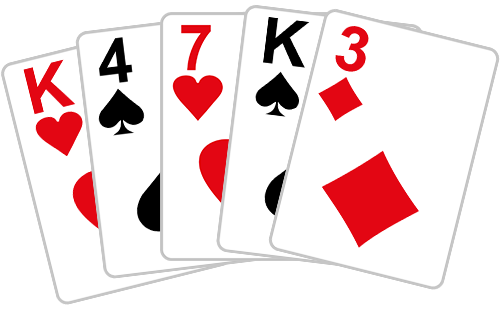
Pairs
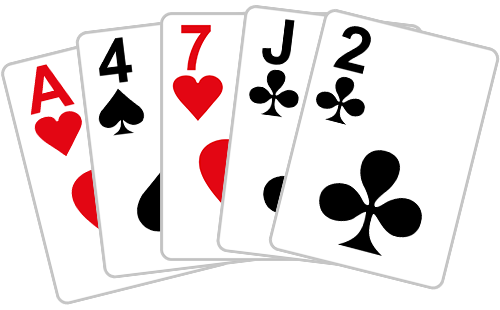
High Card
1. Royal Flush
The royal flush is the only unbeatable hand in poker. It must consist of a 10, Jack, Queen, King and Ace of the same suit. A royal flush is a combination of a straight and a flush, with the added stipulation of being a high straight.
Probability: 1 in 649,740
Combinations: 4
2. Straight Flush
Five cards in sequential order that are also the same suit. A straight flush is a combination of a straight and a flush.
Probability: 1 in 72,193
Combinations: 36
3. Four of a Kind (Quads)
Four cards of the same denomination, the suits don't matter.
Probability: 1 in 4,164
Combinations: 624
4. Full House
Three cards of the same denomination along with two of another, a combination of three of a kind and a pair. The suits don’t matter.
Probability: 1 in 693
Combinations: 3,744
5. Flush
Five cards of the same suit in any order, the numbers don't matter. There are four suits, diamonds, hearts, spades and clubs.
Probability: 1 in 508
Combinations: 5,108
6. Straight
Five cards in sequential order, the suits don't matter. Ace is counted as 1 in the event of a low straight and is the only card that can be used both high and low.
Probability: 1 in 253
Combinations: 10,200
7. Three of a Kind (Trips)
Three cards of the same denomination, kickers are used to settle a draw. The suits don’t matter.
Probability: 1 in 46
Combinations: 54,912
8. Two Pair
Two sets of pairs, if two players have the same pairs, the highest kicker wins. The suits don’t matter.
Probability: 1 in 20
Combinations: 123,552
9. Pairs
Two cards of the same denomination, if there is a draw, the kicker is used to determine the winner. The highest-ranked pair wins. Suits don’t matter.
Probability: 1 in 1.36
Combinations: 1,098,240
10. High Card
When there are no other poker hand combinations, the highest ranked card determines the strength of the hand. In the event of a draw with another player, the next most significant card, which is called the kicker, is used to determine the winner. Suits don’t matter.
Probability: 1 in 0.99
Combinations: 1,302,540

What Beats What in Poker
Information overload? Don’t worry, we’ve got your back. We know it’s a lot of information to digest all in one go. The good news is, the more you play, the more familiar you’ll get with the hand rankings. Before long, you’ll know them off by heart, so you’ll always know what beats what. But until you get to that point, here’s a downloadable cheat’s guide to help you. Download it and save it to your phone if you’re not confident you can remember it all—every poker player has to start off somewhere!
Quick Poker Hand Cheat Sheet
- A Royal Flush beats all other hands in poker, Straight Flush and worse.
- Straight Flush beats Four of a Kind and worse.
- Four of a Kind beats Full House and worse.
- Full House beats Flush and worse.
- Flush beats Straight and worse.
- Straight beats Three of a Kind and worse.
- Three of a Kind beats Two Pairs and worse.
- Two Pairs beats one pair and worse. One Pair beats High Card.
Is It Just Luck of the Draw Getting a Good Hand in Poker?
Ok, so you now know what beats what, but how do you know if you’re going to get a good hand? Or if it’s better than your opponents? That’s when a little math comes in handy. Learning how to calculate the probability of a good hand will always give you the upper hand—excuse the pun—in poker. For example, knowing you can be dealt two pair on average every 21 hands and a straight flush once in every 75,000 hands gives you an advantage.
Every player asks themselves the same question with every starting hand: should I play these cards or not? In Texas Hold’em, for example, there are 169 two-card combinations in a deck of cards, some of which will be better than others. A pair of aces is good, but a 2-7 is bad.
But choosing which poker hands you should play isn’t as simple as waiting for pocket aces. Sadly not chaps and chapesses. It’s a little more complicated than that. There are a multitude of factors you need to consider when playing your hand, including your position at the table, the action ahead of you, and your opponent’s playing style.
Statistics are everything in poker. This is what will help you understand what makes a hand playable or when you should throw in the towel. You can read people’s responses to a certain degree, but probability plays a huge role in deciding whether a poker player should bluff, call, raise, fold, or bet.
For example, if you’re dealt five cards, the probability of having a four of a kind would be around 0.00024. Only two other hands top a four of a kind, which means the probability of having them is .000015. This means there’s only a small chance that another player could beat you with a stronger hand. You can then feel confident to play that particular hand, because you’re more likely to win. Calculating odds can be hard to get your head around as a newbie, so here are a few pointers below to help you get to grips with the basics.
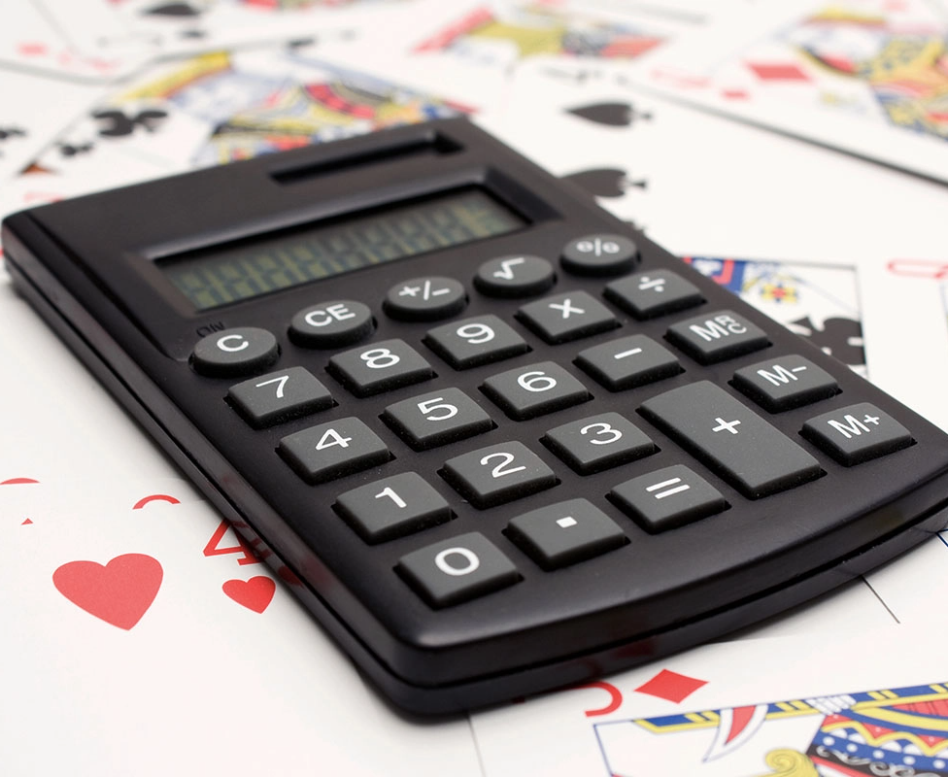
Poker Odds Cheat Sheet
What Are Pot Odds?
Pot odds are the ratio between the size of the total pot and the size of the bet. For example, if there is 2 in the pot, and the player before you bets 1, your pot odds are 3 to 1, because you have to bet 1/3 of the pot for a chance to win it all.
To calculate pot odds, divide the amount to make the call by the current total of the pot. If there is 200 in the pot, and the player before you puts in 100, then the pot will reach 400 if you call. To calculate, divide 100 by 400, which equals 0.25 or 25 per cent, which means you need to win more than 25% of the time to profit.
What Are Implied Odds?
Poker hand implied odds are an estimation of how much you can win from a bet. For example, if your opponent bets 20 into an 80 pot, your pot odds give you 5 to 1, meaning, you’re risking 20 to win a possible 100.
What is Probability?
Probability deals with the likelihood of one outcome over another. The most straightforward example is the flip of a coin, there is a 50 per cent chance it will hit tails, and a 50 percent chance heads will come out. Probability is the easiest way to calculate the chances of a card coming out.
A deck of cards has 52 cards, four suits, and thirteen total ranks, all the number cards plus the face cards, 2 to king. The odds of getting dealt an ace first up would be 1 in 13, while the odds of getting a heart are 1 in 4. Every card dealt changes the probability. If you receive a king first up, the odds of receiving another are 3 in 51 or roughly 5.9 per cent.
Poker Hand Ranking Rules
To make things a little more complicated—apologies, but we never said this was going to be a walk in the park—there are a few instances where players can have similar holding values, but only one player can be the winner of a particular hand.
If two players have a one-pair hand, then whoever has the higher pair will win.
For example, two Kings will always win over two Jacks; two Aces will win over two Kings, and so on.
But at times, two players (or more) could wind up with the same pair, such as AAKJ9 and AAQJ9. This is when ‘the kicker’ comes into play. If two or more players are tied with the same hand rank, the kicker card decides who the winner is. For example, a player with AK will outkick an opponent’s AQ on a AJ932 board. Both players have a pair, but AK has the better 5-card hand of AAKJ9 vs AAQJ9—the K/Q, J, and 9 count as kickers. Whoever has the higher kicker will take down the pot. If the top non-pair cards are the same—e.g. KKQT3 vs. KKQ94—then you have to compare the second high card, and if that’s the same, then the third.
If players end up having the same identical five-card combination, then the pot will be split.
This can also occur with two-pair hands. If two players have JJ55K and JJ55Q, the player holding the King as a kicker will win this pot.
Here are a few other poker hand ranking rules to remember:
- If two players have two pairs, the winner is whoever has the highest pair. If the highest pair is the same, you have to compare the lower pair. If this is the same, then the kicker kicks in. For example, JJ227 will beat TT998.
- If both players have a flush, whoever has the highest is the winner—KhQh8h6h3h beats KsQs7s4s3s.
- When two players each have a straight, whoever has the higher card combination is the winner—for example, QJT98 will beat T9876.
- If two players wind up with a full house, the winner of that hand is the one who holds higher 3-cards of the same rank—77722 wins against 666AA.
- If both players have nothing, the highest card is the winner. If the highest card is the same as the other player’s, you’ll have to compare the second one and so on until you find the difference. For example, AQJ85 beats AQJ83
Best Poker Games to Play Online
Poker hand rankings can vary depending on your game of choice. However, in these 3 games the hand rankings stay the same, and arguably are the most widely played poker games. Try some of these games to get your poker hand ranking firmly under your belt.
Texas Hold'Em Rules
Texas Hold’em is arguably the most famous poker variant. It’s played by 2-8 people, and the aim is to get the best five-card poker hand. Players can use the two cards they are dealt, the five on the board or any combination of the two. There are four main phases.
Pre flop: The small blind is the player to the left of the dealer; the big blind is to the left of the small blind. When play starts each player is given two cards, followed by a round of betting, starting with the person left of the big blind and goes clockwise around the table ending with the big blind.
Flop: After everyone has acted, the dealer burns one card, places it face down on the board and puts three face up.
Turn: Another round of betting occurs. Then the dealer burns and turns one more card.
River: At this point in the game, there are four community cards on the table, a card is burnt, and another is placed in the middle making a total of five community cards. After this stage, no more cards are dealt, and there is only one more round of betting before everyone still in the hand shows their cards in the showdown. If at any stage someone is eliminated, the next player to the left of the small blind goes first. The order in which players reveal their cards is determined by the order in which they act.
1.
Pocket Aces
Two aces are by far the best starting hand for Texas Hold’em. Pre flop they are unbeatable, and overall they have a roughly 80 per cent win rate. Generally, they are a 4 to 1 favourite over most other hands. Statistically, players should get pocket aces at least once every 221 hands.

2.
Two Kings
Two Kings Coming in at a close second are a pair of kings. Pre flop, they are the favourite against any other hand, except pocket aces. Kings have around a 75 per cent win rate.
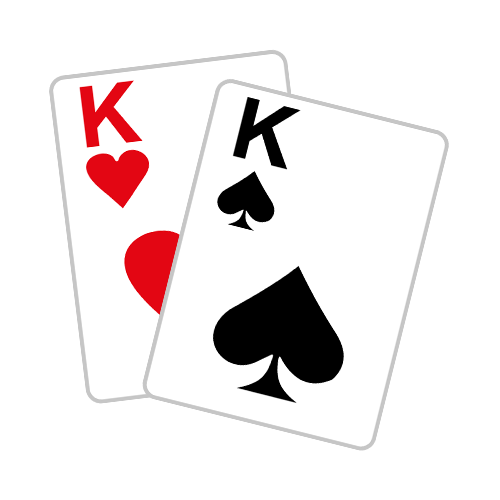
1.
Two Queens
A pair of queens will beat the majority of other hands pre flop, however, the chances of winning start to go down on the flop, turn, and river.
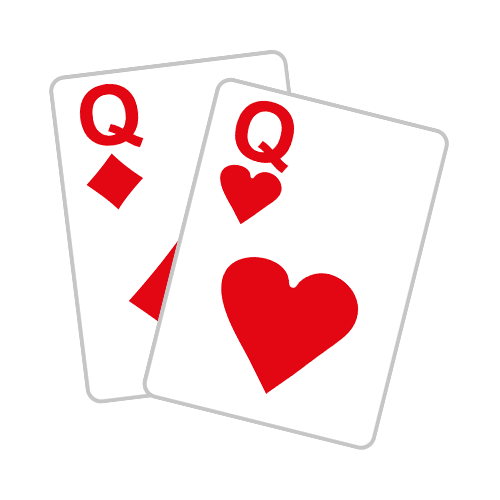
2.
Two Jacks
Pocket jacks are number four, while they aren’t a top pair, they are certainly enough to get you the win. Jacks win around 20 per cent of the time. Obviously keep an eye out for larger pairs, straights, and flushes.

1.
Ace, King
Ace, king is one of the strongest drawing hands and has a decent win percentage. Ace, king suited is the best possible version of this hand because it opens the chance for flushes.

2.
Two Tens
A solid starting hand, but very tricky to play if there are picture cards in the flop. They are strong enough to win on their own and are great for the turn and river if the betting is low.
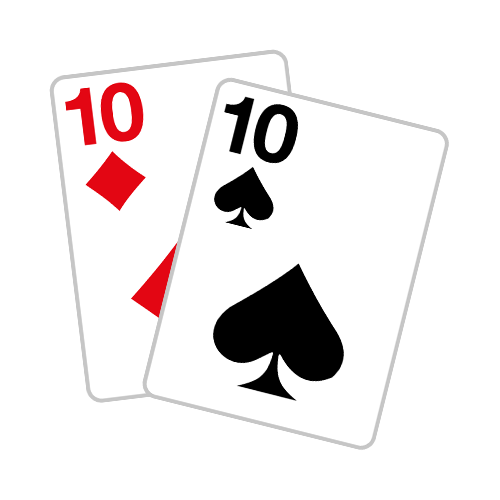
1.
Ace, Queen
Ace, queen suited is another strong drawing hand and will win roughly 20 per cent of the time.
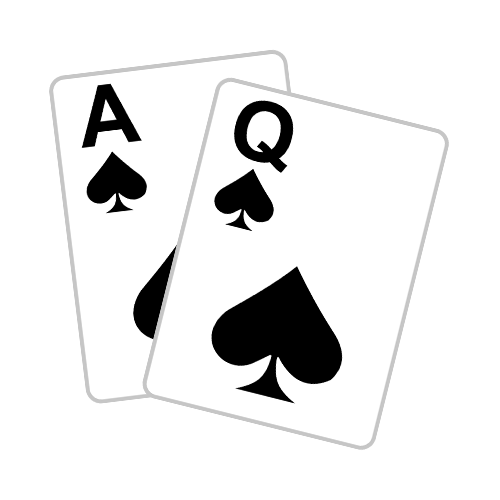
2.
Ace, Jack
Another good drawing hand, especially if suited. Has excellent opportunities to make a straight. Keep in mind that any ace, king or ace, queen combination will beat you if an ace comes out.

1.
King, Jack
King, jack, especially in later positions will win around 19 per cent of the time, while unsuited it drops to 15 per cent.
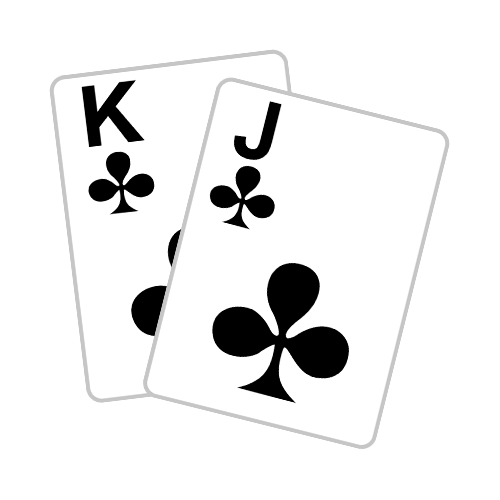
2.
Two Nines
Pocket nines is a reliable pair that is ideal for later in the game if the betting is low and you are last to act.
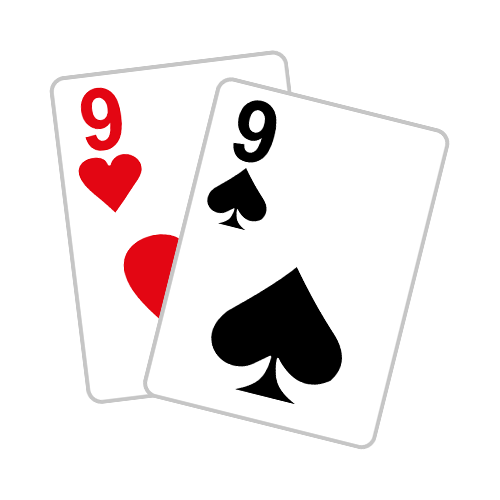
Omaha Poker Rules
Pre-Flop: The game starts with everyone getting one face-up card; the player with the highest gets to be the dealer. The blinds are posted next; then the cards are dealt, each player receives four. A first-round of betting occurs, where players can raise, increase the current bet, call, match the bet, or fold.
Players can only use two cards from their hand, and three of the community ones, this is always mandatory. For example, if you have Ace, Ace, Ace, Ace, in your hand, it’s not counted as four of a kind, you can only use two.
Flop: After the pre-flop betting is resolved, a card is burned and another three are placed face-up as part of the first three community cards. Another round of betting follows, and players get the same three choices, raise, call or fold.
Turn: One more card is burned, and another is placed in the middle. A round of betting follows, and players get ye same three choices, raise, call, or fold.
River: The river is the final phase. One more card is burnt, and the last community card is placed in the middle. This round of betting is identical to the previous ones. At this stage, if more than two people are in the hand, then they go to the showdown and players reveal their best five-cards, using two from their hand, and three from the table.
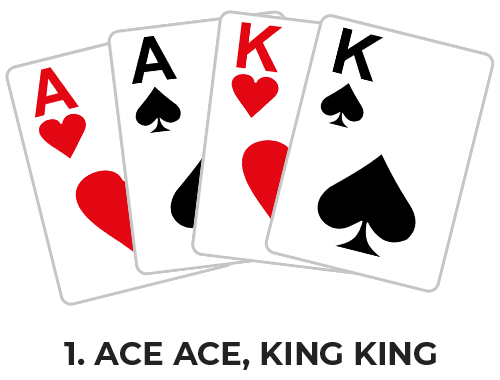
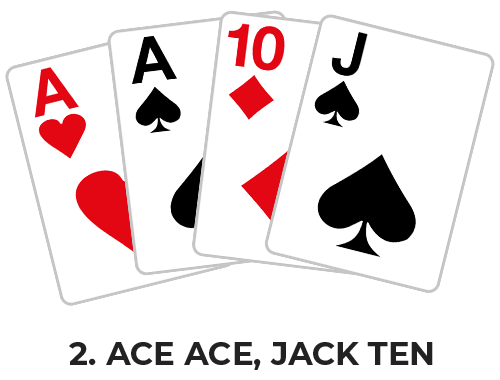


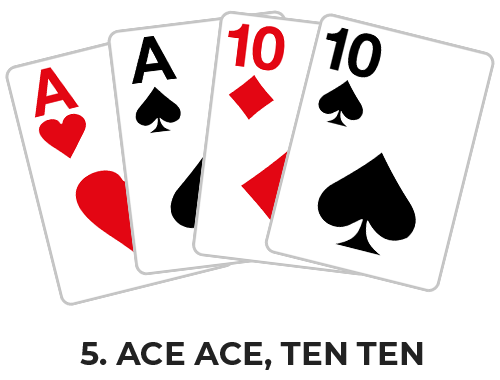
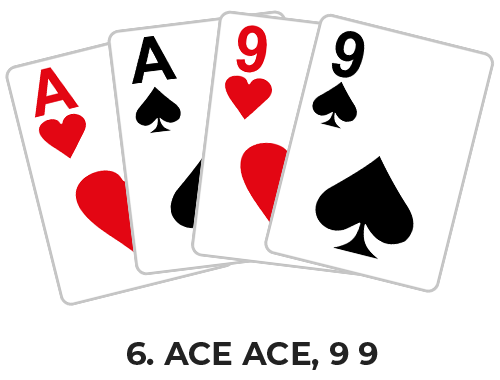
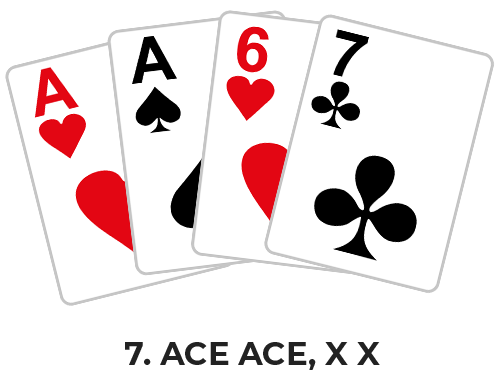


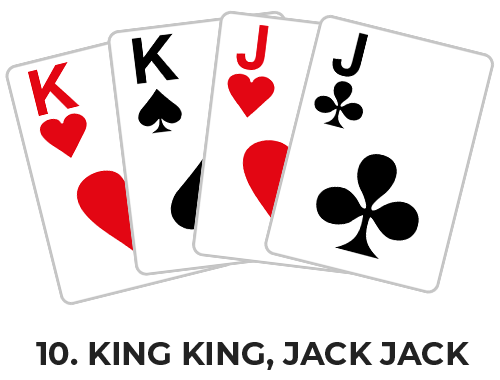
Stud Poker Rules
The first to act in a game of Stud is usually the player with the highest-ranked hand showing. Pairs, three of a kind and quads count in their regular order, incomplete straights and flushes don’t. If there is a tie, it is usually solved via the kicker. The player with the lowest visible card also must place a compulsory bet called the ‘Bring in’, this can be used in conjunction with, or instead of an ante paid by every player at the table.
Five Card Stud: To start, everyone places an ante in the pot and the player with the lowest ranked card has to pay a ‘Bring in’ wager. Then everyone is dealt one card face down and another face-up, this is followed by the first betting round.
Next, each player is dealt a third face up card and another betting round follows. Surviving players are dealt a fourth card, and another round of betting follows. Everyone who hasn’t folded yet, receives a final card and the last round of betting occurs. Whoever is left, reveals their poker hand in the showdown and the highest-ranked wins the pot.
Seven Card Stud: Players receive a total of seven cards throughout the game and can pick the best five to make up their hand. At the start of the game, everyone posts the ante and receives three cards, two face down and one face up. The player with the lowest card showing has to pay the ‘Bring in’ wager, and play continues clockwise to the next player on the left.
Everyone then gets another face-up card, and the player with the best-revealed cards gets to act first, play continues clockwise to the left. Each player receives a third face-up card, and whoever has the best face-up cards gets to act first, play continues clockwise to the next player on the left.
A sixth card is dealt face-up, and whoever has the best face-up card gets to act first, play continues clockwise around the table. Everyone still in the hand gets a final card face down, and the player with the best face-up cards gets to act first, once again, play continues clockwise. After this betting round, anyone left enters the showdown and reveals their best five cards. In total, players get two cards face down, four up and then one final down.
Poker Hands - Frequently Asked Questions
Can a straight be Jack, Queen, King, Ace, 2?
- No. Straights can only be in sequential order, for example 4, 5, 6, 7, 8.
What happens when there is a draw?
- When two players have the same hand, the next highest card is used to decide the winner. If both hands are equal and a decision can’t be reached, it becomes a split pot. The pot is divided equally between the two players. If there is an uneven number of chips, the player closest to the left of the dealer gets the remainder.
- Example:
Kicker- Player One—Ace, Ace, 8, 5, 7
- Player Two—Ace, Ace, 2, 4, 6
- Hand One is the winner, both have a pair of aces, but Hand One has an 8 kicker which outranks the rest of Player Two’s cards.
- Split Pot
- Player One—King, King, 7, 6, 8
- Player Two—King, King, 7, 6, 8
- It’s a split pot because both hands are of equal rank
Do you have to show your cards at the end of a showdown?
- Players can choose to muck their cards in certain circumstances. If you are second to act, and your opponent reveals a stronger hand, you can discard your hand without revealing your cards. Mucking can be useful for players wishing to hide their play style. In an online environment the button will flash up if it’s an option
What's the best hand in poker?
- An ace-high straight flush—known as a Royal flush—is the best possible hand in most forms of poker. The odds of getting it sit at around 1 in 649,740, which is why many casinos offer a bonus to any player who gets on
What's the best starting hand for poker?
- Depending on the variant, generally the best hand is anything with two or more aces
What's the worst starting hand in Texas Hold'Em?
- Nearly everyone will agree that 2, 7 of different suits is by far the worst starting hand for Texas Hold’em. There are very few options available with a 2,7 off suit, there is no straight draw, no flush draw, and even if you end up with a two pair, it’s still likely to los
Should I fold most of my hands while playing poker?
- The short answer is yes. Regardless of the poker variant you are playing, being in too many hands is always a bad thing. Pick your spots, wait for decently ranked hands and try to avoid bluffing too much
Are the hand rankings the same in all forms of poker?
No, however, most of the popular poker variants all follow the Texas Hold‘em hand rankings, including Stud Poker and Five-Card Draw. If you only want to learn one set of hand rankings, focus on this one.
Register on GlobalPoker.com
to Play Now!
Don’t forget you can practice your poker moves here for free. Register to play poker at GlobalPoker.com. You’ll be able to put this theory into practice by playing against other players online. The more you play, the more you’ll start to hone some winning strategies.
We’ve got plenty of poker games to whet your whistle. Browse our poker games collection below to find out what kind of poker player you really are. A good one, hopefully.





